There’s an interesting exhibition of art at the Georgetown Historical Society in Georgetown, Maine. Some of the pieces on display are an unusual pairing of abstract painting and wooden boat models. The disciplines of art and boatbuilding have very different goals, one purely aesthetic and the other quite practical, but both require thoughtful attention to form. The artist/boatbuilder who created these pieces is Willits Ansel.“For boat builders to paint is not unusual,” Willits noted in his comments about the exhibition. “Fairness and balance are factors to be mindful of, whether designing a boat or painting an abstraction. What may make for beauty, particularly, is line, and balance, found in each though more a necessity in the models.” The opening photo at the top shows the installation at the Georgetown Historical Society gallery. The piece here is a composition of models and half models, all initially created as boatbuilding aids.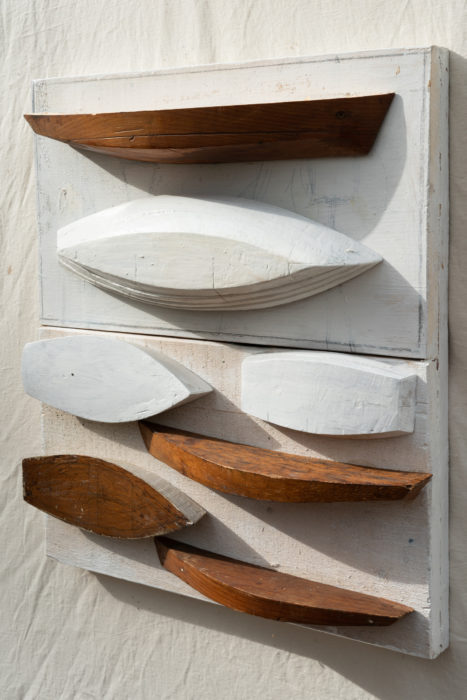 Evelyn Ansel
Evelyn Ansel
Join The Conversation
We welcome your comments about this article. To include a photo with your remarks, click Choose File below the Comment box.


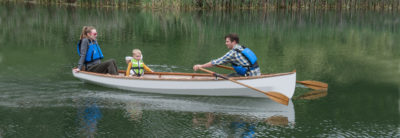

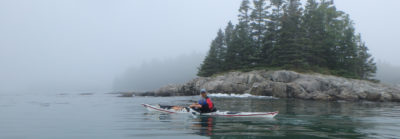
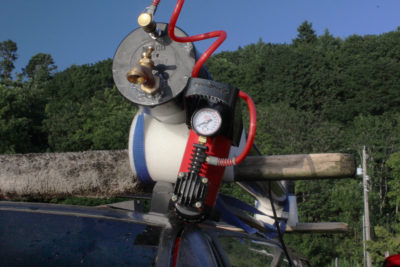

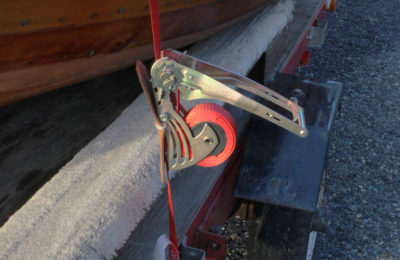
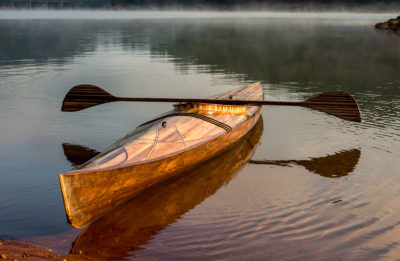
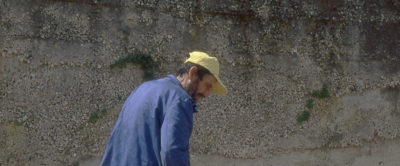
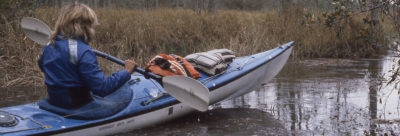
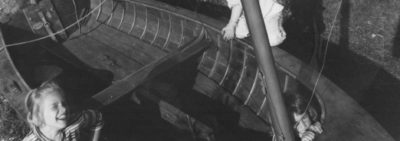
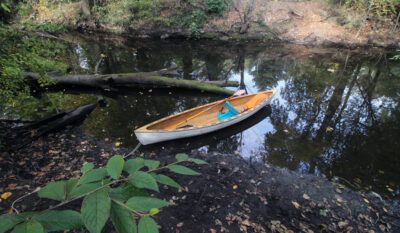
Thanks for the heads-up about the Ansel exhibit in Georgetown. Of course Mr. Ansel was intimately familiar with everything about half models. He might have laughed then, when in the early ’80s a MacDonald’s opened in Bath, up river from Georgetown. They made an effort to fit in with the shipbuilding history of the city by decorating the interior with “shippy” photos, wallpaper, and half models. Unfortunately several of the half models were mounted with the decks instead of the back of the half-hulls into the wall. It was a source of some amusement in town…for some.
I hadn’t known about Will Ansel’s death. In the summer of 1958 Will and I, both married and recently out of the navy, found ourselves the only students in the University of Virginia summer architecture school, trying to get a jump start on what was then a five-year professional program. Will and his wife Hanneli were living up in the hills about 25 or 30 miles outside of Charlottesville, Virginia, where he taught history at, and was the de facto head of, the Blue Ridge School for boys. Our daughter Gordon and their Walter were both toddlers and we all spent a lot of time together that summer and over the next couple of years, but as you might expect, Will didn’t take very well to the disciplined side of architecture and stayed on at the Blue Ridge School, where he dealt with the stresses of teaching at a nearly defunct boarding school by building a 20-something foot sailboat. I left Charlottesville to finish my architecture degree at Penn and Will, trailing his sailboat behind him, left the Virginia mountains for Madison, Wisconsin to get his master’s degree. They stopped in to see us in Philadelphia three or four years later while on their way to a teaching job in DC.
I went to work in England and then back to Virginia. I’d heard from a friend that Will was in Mystic, but by the time we’d retired to Connecticut, Will had moved on to Maine and our paths never crossed again.
When we did finally get to Mystic about 15 years ago, we ran into his son Walter, and saw Will again that same year at WoodenBoat School where I finally began work on my first wooden boat, 60 years after my introduction to the mysteries of wooden boatbuilding on a rainy evening in a steamy plastic-wrapped tent in his back yard in the mountains of Virginia.
I liked the forms of “art,” especially the watercolor of the dory skiff, the Greenland kayak frame, and the single-blade paddle.